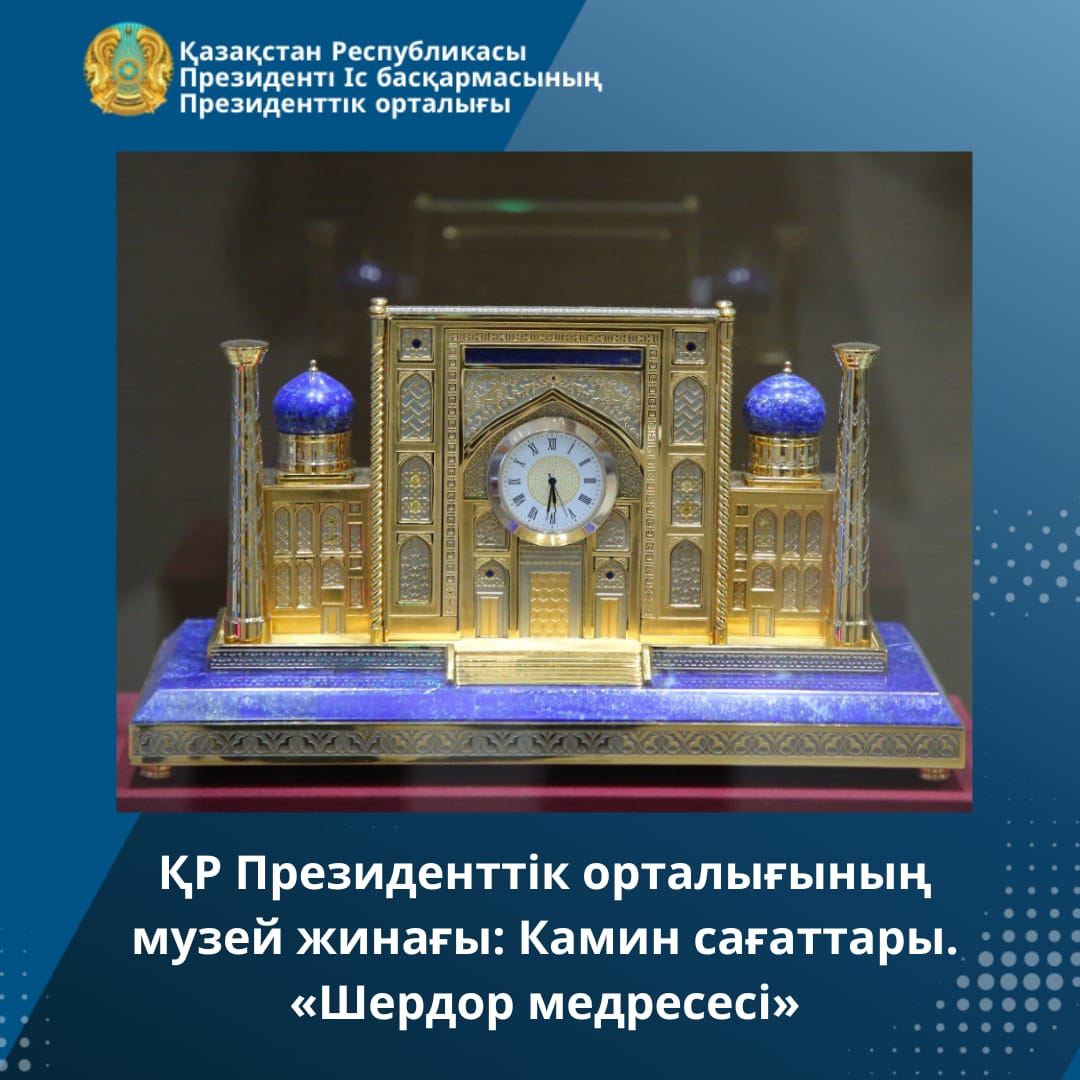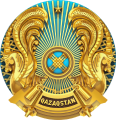
The mantel clock "Sherdor Medrese" is a handmade piece made of brass and malachite, covered with enamel and 958 gold. It was presented to the Head of State, K.K. Tokayev, by the President of the Republic of Uzbekistan, Sh.M. Mirziyoyev, during his state visit to Kazakhstan.
Sherdor Medrese is an Islamic educational, spiritual, enlightenment and memorial-cult building of the XVII century in Samarkand on Registan Square.
The medrese was built between 1619 and 1636 by the order of the Samarkand ruler, Bahodir Yalangtush. Together with the Ulugbek and Tillya-Kari medreses, it forms a complete architectural ensemble.
It is worth noting that in 2001, along with other landmarks in Samarkand, it was added to the UNESCO World Heritage List.
The modern name "Sherdor" derives from the mosaic pattern on the tympanum of its main portal. The decorative master depicted a hunting scene featuring a fantastical creature from the feline family resembling a tiger, but with the mane of a lion, bathed in the rays of the rising sun. The name "Sherdor" is translated as "possess lions" or "possess tigers." The scene depicted on the portal of the medrese eventually became one of the national symbols of Uzbekistan.
In the early 20s of the XX century by the decree of the Soviet authorities teaching in the madrasah was stopped. The building was nationalized, and restoration work began in 1924. The khudjras (small rooms) were repaired, the collapsed part of the brick vault of the portal arch was restored, and the carved mosaic of the tympanum of the main portal was reinforced. In the late 50s of the last century, archaeological research was conducted on the territory of the madrasah, after which a new stage of restoration began.
In 1960-1962, the minarets of the medrese were renovated. In 1962, based on the design of artist V.N. Gorokhov and architect A.I. Freitag, the mosaic of the tympanum above the main portal arch was restored. The restoration and reinforcement work on the medrese was completed in 1965-1967.



